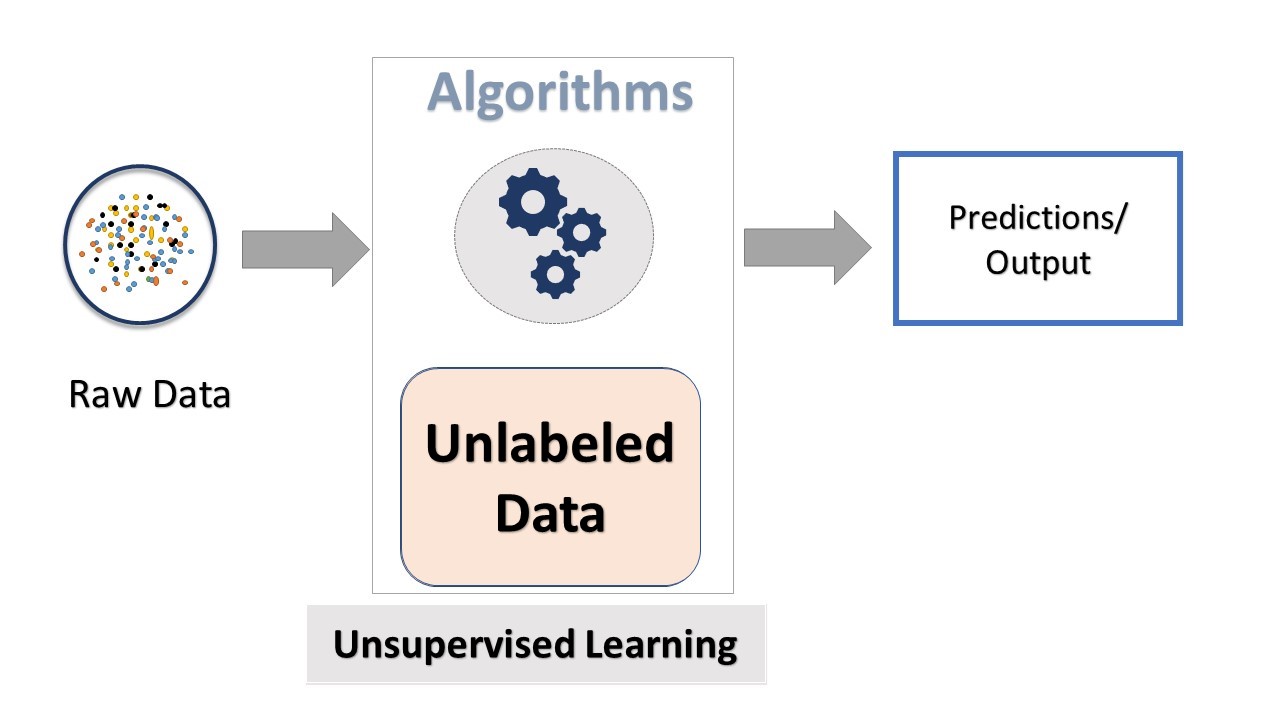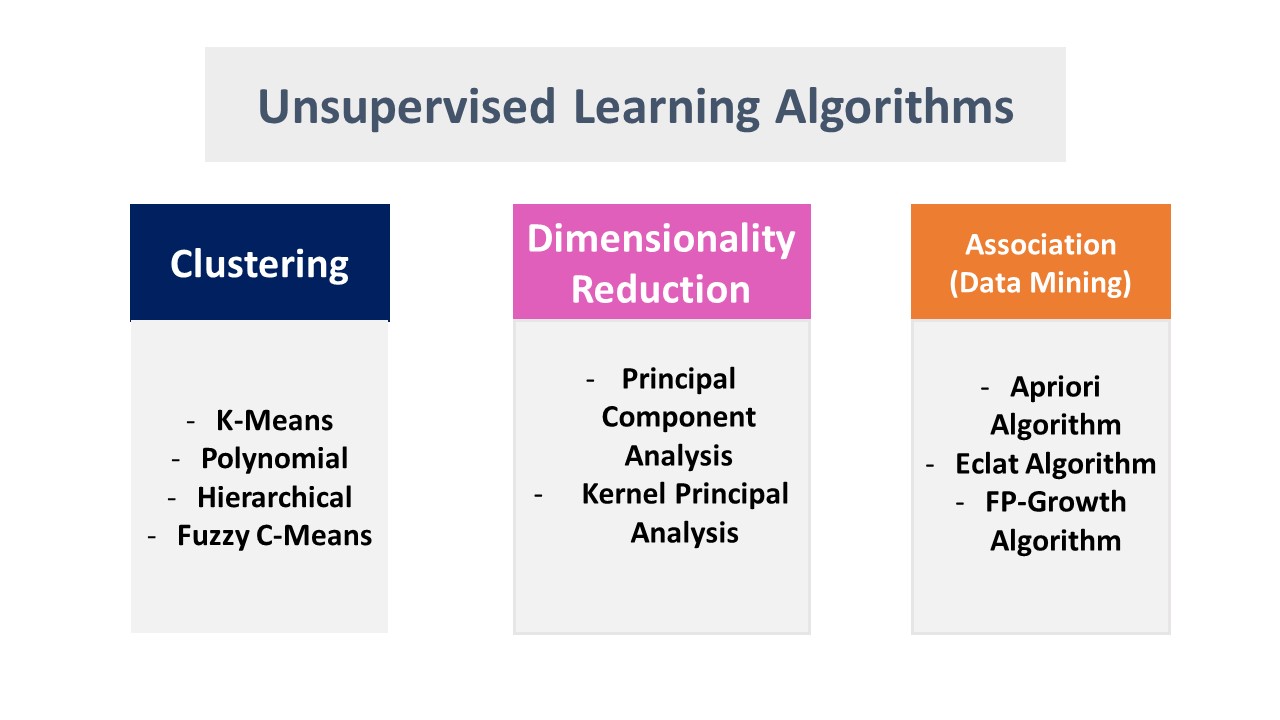What is Unsupervised Machine Learning?
Unsupervised learning is the type of Machine Learning, which is used to find hidden data patterns, or it is often used when you have limited understanding of the data and want to explore the similarities. Unlike Supervised Learning, Unsupervised Learning does not consist predefined features or labelled datasets and does not give the predictions or trained models directly.
 Unsupervised Machine Learning Working
Unsupervised Machine Learning Working
At the initial stage, Unsupervised Learning finds features. Then, it tries to give outputs or predict something. It is widely used to make recommendation systems (Youtube, Netflix and other OTT platforms), Big Data visualization.
Working of Unsupervised Learning
Unlike supervised machine learning, Unsupervised learning does not include pre-labelled data. Instead of all this, we take unlabelled input data, which is not categorized on the basis of various attributes, and also does not involve corresponding outputs for supervision. Later on, the unlabelled input data get fed to the machine leaning model to complete its training part.
At first, the raw data gets interrupt to find the hidden data patterns from the applied dataset, and after this we apply suitable unsupervised machine learning algorithms on the basis of nature of datasets.
After applying the suitable algorithm, which divides the data-objects into groups on the basis of parities and differences between the objects.
Types of Unsupervised Learning:
 Unsupervised Learning Types and Algorithms
Unsupervised Learning Types and Algorithms
Clustering: Cluster is the subset or method of unsupervised machine learning, which is used to classify the objects into clusters on the basis of similarities.
Simply put, It classifies the objects into clusters through checking, which data points have less or more similarities.
Commonalities between the data objects are found by this cluster analysis, and then these data-objects get categorized on the basis of presence and absense of those similarities.
There are mainly 3 clustering algorithms, which are:
- K-Means
- Hierarchical Clustering
- Fuzzy-C-Means
Dimensionality Reduction: DR is one of the methods of unsupervised machine learning in which we use to reduce the dimensions or input data variable in dataset to make the process smoother. It can also be understood as the techniques which is also used in classification and regression datasets to make a good predictive model.
There are many more techniques in DR method, but the most-knowns are:
- Linear Discriminant Reduction (includes in Supervised Machine Learning)
- Principle Component Analysis (counted in Unsupervised Machine learning)
Association:
An association rule is an unsupervised learning method which is used for find the relationships between variables in the large database. It determines the set of items that occurs together in the dataset. Association rule makes marketing strategy more effective. Such as people who buy X item (suppose a bread) are also tend to purchase Y (Butter/Jam) item. A typical example of Association rule is Market Basket Analysis.
Why Unsupervised Machine Learning?
There are lots of reasons of using Unsupervised Machine Learning algorithms, but here we describing one of the sold reasons behind using it in various applications:
- USML helps us to find-out the hidden insight from a dataset.
- As it does not have labelled datasets that’s why it learns from its own experience like a human. And that’s what makes it a real AI.
- As we-all know in case of real-world datasets, it is not mandatory to have all-time labelled dataset with yourselves. So, it becomes an important method for all new-dataset.
Pros & Cons of Unsupervised Learning
Pros
- Unsupervised Machine Learning is used for complex tasks with compare to Supervised Machine Learning. As it does not have labelled dataset like Supervised Machine Learning, it is used for many unlabelled datasets.
- It is preferable as it is easy to get unlabelled datasets with compare to labelled datasets.
Cons
- UML is intrinsically more difficult with compare to supervised machine learning as it does not keep predefined output value.
- Usually, the magnitude of accuracy is not high as supervised machine learning’s cases. Because it does not know about all of the input labels and exact output in advance.
Applications of Unsupervised Machine Learning
- Anomaly Detection: Anomaly detection uses unsupervised machine learning to find out unusual data-points in datasets. It is mainly useful in fraudulent detection.
- Recommender Systems: Recommender system is one of the frequently used applications of machine learning. It is used in many internet ventures such as Netflix, Amazon Prime Video, Hotstar, Amazon, Flipkart, Alibaba, Youtube, Google Advertisements and other recommendation systems of e-commerce, entertainment websites or platforms.
- Customer Segmentation: Customer segmentation is also one the great applications of machine learning for each kind of companies. Through a customer segmentation, businesses can find out their targeted-customers, can show them their products or services.
- Genetics: DNA pattern recognition has become a usual stuff in lots of countries to find out the true parents. It is also used in research & development of many medical entities.
Powered by Froala Editor



